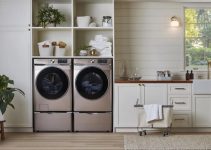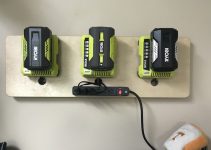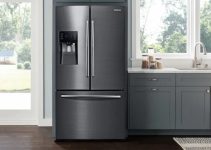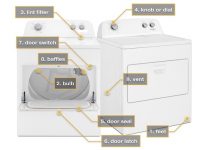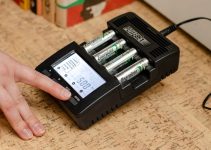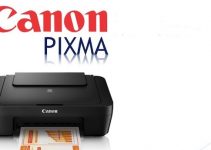Before you reset the Samsung Fridge water filter, you will need to first change the water filter itself. This ensures you get clean, filtered water from the fridge with every use. You should replace the water filter every six months. The water filter indicators will alert you when it is time to change the filter and after changing it, you will have to reset the filter.
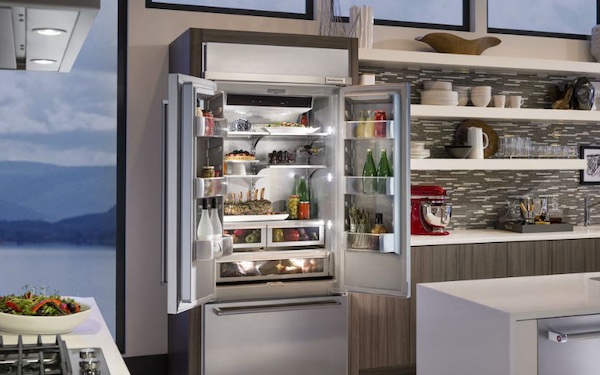
Choosing a Water Filter for your Samsung Fridge
There are three types of Samsung water filters, so you’ll want to make sure you’re choosing the correct one for your fridge.
First, find the filter in your fridge model. The location of the filter will depend on your model. You should check your user manual if you’re unsure. Then, check the model number on the filter itself. This will let you know which of the following filter types you’ll need to purchase.
- HAF-CIN
- HAF-QINSet featured image
- HAFCU1
How to Replace Your Samsung Fridge Water Filter
Replacing your water filter is simple and should only take a few minutes. If you’re unsure about whether you need to replace the filter, you can check the indicator light on your fridge.
After you have been using the filter for 6 months, the indicator should change. On some models, it will lights up when it wasn’t lit before, and on others it will simply turn red. At this time, you should change the filter immediately.
HAF-CIN and HAF-QIN filter types:
To replace the filter;
- Turn off the water supply and then locate the filter. If you are unsure where it is, consult your user manual.
- Open the water filter cover and then rotate the old filter counterclockwise to unlock it.
- After that, pull it straight out to remove it from the filter housing.
- To insert the new filter, you need to first remove the protection cap from the top of the filter. When done, push it straight into the filter housing and turn it clockwise.
- Ensure that the lock symbol matches up with the indicator line.
HAFCU1 filter types:
- Start by turning off the water supply and then locate the filter. If you are unsure where it is, consult your user manual.
- To remove the old filter, twist it to the left. This should unlock it.
- After that, pull it down to remove it from the filter housing.
- To insert the new filter, you need to push it up into the filter housing and then turn it to the right.
- Ensure that the notch at the top of the filter is matched up with the arrow on the filter housing.
- Once the filter is replaced, dispense a few gallons of water to flush out any impurities or air. Then, you will need to reset the water filter light on your fridge.
How to Reset the Samsung Fridge Water Filter Light
The water filter light on your fridge is designed to operate on a timer and will turn on after 6 months. For models where the indicator is always lit, it will turn red once the 6 months elapse.
Depending on the quality of the water in your area and the amount of water you dispense or whether you have more than one person, you may want to change the filter more or less frequently than the light suggests. You can easily determine if a new filter is needed by dispensing water first with the filter installed and then with the filter removed. If the speed the water dispenses at is significantly different, you should replace the filter whether the indicator is lit or not.
- Once the filter is removed, you can reset the filter light:
- Find the Filter Reset button on the control panel. In some models, the filter reset button could be the secondary function of another button on the panel.
- Once located, touch and hold the correct button for 3 seconds until the light resets.
- The filter icon will either turn off or change back to its normal color when it’s reset. This will reset the timer to 6 month over again.
Note: Some models may require two buttons to be pressed simultaneously to reset the light. Touch screen models will use on-screen menus instead. For instructions specific to your refrigerator, you should go through your user manual.
Resetting the water filter light (Family Hub)
- To reset the water filter light and timer on your Family Hub fridge, follow the steps below:
- From the Home screen, go to Apps, and then go to Fridge Manager.
- Go to Fridge Settings.
- Go to Water Filter, then tap Reset, and then tap Proceed. This will reset the filter light and timer.
- After tapping the water filter icon, you can tap Buy Filter to purchase a Samsung water filter if needed.
Resetting the water filter light (RF4289 and RSG309)
- You can also reset the filter light on models RF4289 and RSG309.
- Go to and select the Settings icon at the bottom of the display, and then tap Water Filter.
- When the Water Filter menu opens, tap Next in the bottom right corner three times until you reach page 4/4 of the Water Filter menu.
- Touch and hold Reset the water filter in the middle of the display until the status of the filter changes.
- After “Filter Replaced” appears and goes away, tap Save in the bottom right corner of the display.
Water filter standards
The National Sanitation Foundation (NSF) and the American National Standards Institute (ANSI) have various standards to identify what a water filter should filter to keep your drinking water clean and pure. Samsung’s water filters are Carbon Filters rated for the NSF/ANSI 42, NSF/ANSI 53, and NSF/ANSI 401 standards.
NSF/ANSI 42 Standards
- Filtered to reduce aesthetic impurities such as chlorine and taste/odor.
- Particulate Class I
NSF/ANSI 53
- Certified to reduce a contaminant with a health effect. Health effects are set in this standard as regulated by the U.S. Environmental Protection Agency (EPA) and Health Canada.
- Asbestos, Atrazine, Benzene, 2, 4-D, Carbofuran, Chlorbenzene, Cyst (99.99%), Endrin, Ethylbenzene, Lead, Lindane, Mercury, O-Dichlorobenzene, P-Dichlorobenzene, Tetrachloroethylene, Toxaphene, Turbidity
NSF/ANSI 401
- Verified to reduce one or more of 15 emerging contaminants from drinking water. These emerging contaminants can be pharmaceuticals or chemicals not yet regulated by the EPA or Health Canada.
- Atenolol, Bisphenol A, Carbamazepine, DEET, Estrone, Linuron, Nonylphenol, Phenytoin, Trimethoprim
